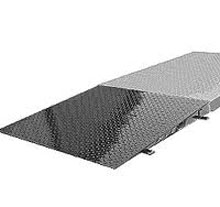
Access Ramps Resources
- Home
- Types of Access Ramps
- Access Ramps for Disabled
- Access Ramps for Sale
- Access Ramps for Wheelchairs
- Ada Access Ramps
- Building Access Ramps
- Disability Access Ramps
- Disabled Access Ramps
- Disabled Access Ramps Regulations
- Easy Access Ramps
- EZ Access Ramps
- FAQs Access Ramps
- Handicap Access Ramps
- Handicapped Access Ramps
- Lightweight Access Ramps
- Modular Access Ramps
- Portable Access Ramps
- Portable Disability Access Ramps
- Vehicle Access Ramps
- Wheelchair Access Ramps
Easy Access Ramps
Because easy access ramps should usually have an incline of about 4.8 degrees, complying with this approach will offer wheelchair, cart, or even forklift truck users no transit problems at all. Not only can easy access ramps be used to scale inclines, their use is particularly important to allow such users to transit cables being run on the ground, during construction of a building or in the street. Portable easy access ramps should be modular so that they can be used in semi permanent or mobile locations. Having the ability to extend the length or width is a great advantage as you will get more functionality out of easy access ramps that can address different ramp dimension requirements.
Easy access ramp surfaces
It is vitally important that the surface of easy access rams are slip resistant at all times regardless of the weather conditions. Ramps can be used by many different users, pedestrians and wheelchair owners, as well as cart or scooter users. It is important that the ramp design and installation allows for any rain water to drain off efficiently. This is particularly important in colder regions where during the winter, surface water can turn to ice and become treacherous. In cases where this can be an issue, you could be well advised to install a light steel lattice construction ramp, so any rain water will just fall through the ramp to the ground below. Wood is sometimes used for easy access ramps; wooden ramps are straightforward to construct, even at home. When building an easy access ramp made of wood, it is best to choose a hardwood for longevity and make sure a matt waterproof finish is applied, to avoid the wood getting soaked and turning slippery.
Easy access ramps in and around the home
Installing either permanent or semi permanent easy access ramps around the home make sense if a member of your family uses a wheelchair, even if only temporarily, such as after an operation on their hip or leg. You should decide where the ramps should be located both in your home and in the garden. Having ramps around the home will allow wheelchair users to be able to enjoy access all of the areas they wish to go, without being blocked by steps or a high door stop. You can decide whether to buy or build your own easy access ramps.
Aluminum is a particularly popular metal used for semi permanent or mobile ramps, as it is lightweight but durable. A number of suppliers offer easy access ramps starting from 2 feet and extending to 10 feet. Smaller ramps can be carried in the car so that when a wheelchair user wants to head out, a small ramp can be carried behind their car seat, or in the trunk and can be taken with them on the move and used to scale small steps. If you have installed wooden ramps around the house, you should take time regularly to ensure they are still in good condition and not in danger of breaking. Make sure you have treated the easy access ramps with a waterproofing liquid protector such as creosote to ensure safety for any users on the ramps.
